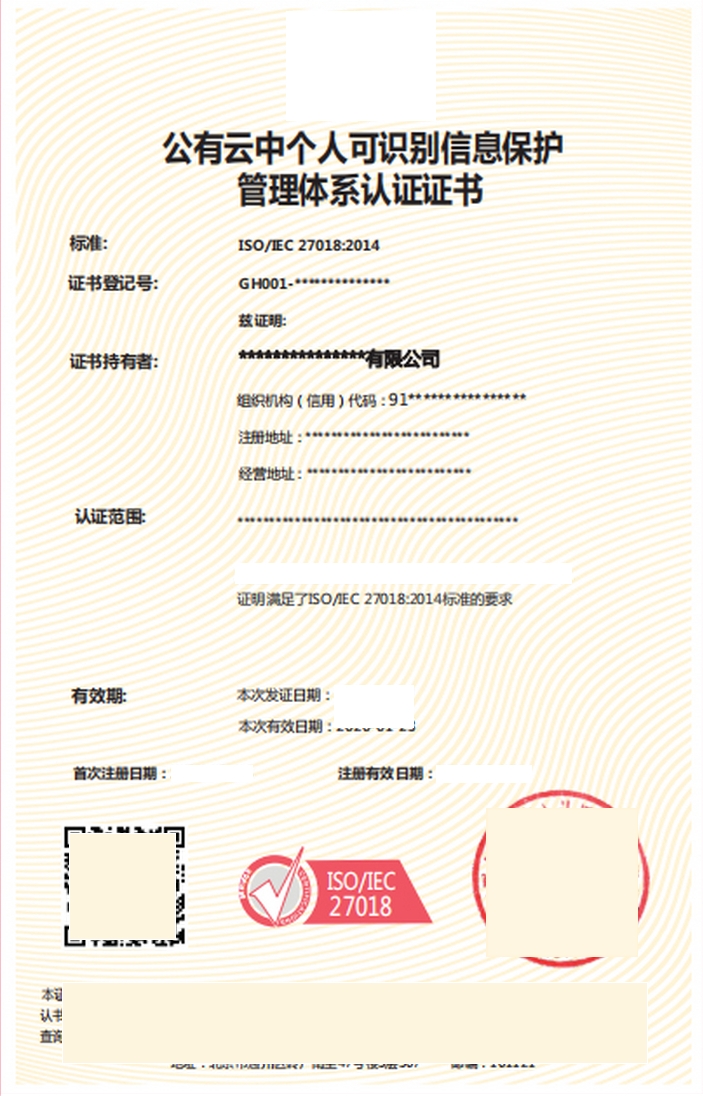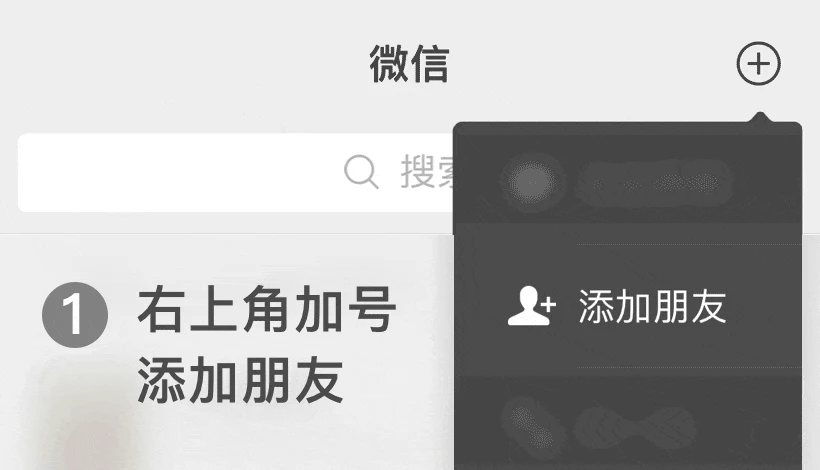
 Professional services are guaranteed
Professional services are guaranteed One on one full process guidance
One on one full process guidance Efficient and fast experience
Efficient and fast experienceCore objective
Protecting personal data sovereignty: ensuring users' control over their cloud data.
Strengthen technical security measures: reduce the risk of data leakage through encryption, auditing, and other means.
Meet global compliance requirements: seamlessly integrate with GDPR, CCPA and other regulations, simplify multi jurisdictional compliance processes.
scope of application
Service target: Public cloud service providers (such as AWS, Azure, Alibaba Cloud, etc.) and their customers.
Data type: Covers all forms of personally identifiable information (PII), including name, ID number, biometrics, etc.
Industry field: applicable to all industries that rely on cloud services, such as finance, healthcare, education, and government.
1. Protection of data subject rights
ISO/IEC 27018 grants users absolute control over cloud data, including:
Right to Information: Cloud service providers must inform users in clear language of the purpose of data collection, processing methods, and storage locations.
Explicit consent: User authorization must be completed through active actions (such as checking the consent box), and can be revoked at any time.
Data access and correction: Users can query cloud PII at any time and request service providers to correct any errors found.
Deletion rights and portability: Users can request the complete deletion of data ("right to be forgotten"), or export data through standardized formats such as JSON and CSV.
2. Data processing transparency and usage restrictions
Prohibition of secondary use of data: Cloud service providers are not allowed to use PII for unauthorized purposes such as advertising analysis and user profiling.
Third party disclosure control: Share data only when required by law or authorized by users, and record the shared object, time, and content.
Full lifecycle audit: All PII operations (access, modification, deletion) must generate logs and retain them for at least 6 months for auditing.
3. Technical specifications for data security protection
Encryption mechanism:
Static data: Use strong encryption algorithms such as AES-256 to protect stored PII.
Data transmission: Use TLS 1.3 or higher protocol to ensure secure data transmission.
Physical security: The data center needs to have biometric access control, 24/7 monitoring, redundant power supply, and disaster recovery facilities.
Access Control: Role Based Access Control (RBAC) ensures that only authorized personnel have access to PII.
4. Event response and risk management
72 hour notification mechanism: After a data breach occurs, cloud service providers must submit an incident report to customers and regulatory agencies within 72 hours.
Emergency response process: Establish a standard operating procedure (SOP) that includes threat detection, root cause analysis, system recovery, and post event review.
5. Compliance certification and audit requirements
Third party independent certification: It is necessary to pass the audit of an ISO accredited auditing agency (such as BSI, T Ü V) to obtain the certification certificate.
Customer audit rights: Allow customers or their authorized third parties to conduct on-site or remote evaluations of cloud service providers' security measures.
Data sovereignty commitment: Clarify the geographical location of data storage and cross-border transmission rules, and meet regulatory requirements such as GDPR.
1. Global benchmarks for privacy protection
The first international standard designed specifically for public cloud environments, which clarifies the protection requirements for personally identifiable information (PII) and fills the privacy protection gap in cloud service scenarios.
2. Shared responsibility and transparency
Define the responsibility boundary between cloud service providers (CSPs) and customers, require CSPs to publicly disclose their data processing practices, prohibit the misuse of customer data (such as for advertising purposes), and enhance users' trust in cloud services.
3. Strengthen data security capabilities
Provide 44 control measures, covering technical means such as encryption, access control, anonymization, as well as process requirements such as incident response and supply chain management, to systematically reduce the risk of data leakage.
4. Compliance Empowerment
Highly coordinated with regulations such as GDPR and CCPA, providing technical compliance pathways for cloud service providers, simplifying the difficulty of legal adaptation in cross-border business, and avoiding fines (such as GDPR's maximum penalty of 4% of revenue).
5. Enhancing market competitiveness
Certification can serve as a differentiation advantage, attracting customers who value privacy (such as government, finance, and healthcare industries) and becoming a qualification endorsement for participating in international projects.
6. Protection of User Rights and Interests
By enforcing principles such as data minimization and user rights responsiveness (such as access and deletion rights), we ensure that users have control over their own data and reduce privacy disputes.
7. Promote industry innovation
For cloud computing AI、 Provide a technical framework for privacy protection in scenarios such as the Internet of Things, support the secure implementation of emerging technologies, and promote the development of data-driven businesses.
(I.) List of Application Materials
1. System documents
Privacy Policy and Objectives: Clarify the scope of PII processing, user rights protection mechanisms, and compliance commitments.
Risk Management Plan: Based on ISO 27005 risk assessment report, including PII leakage risk and mitigation measures.
Process document:
Data collection and usage authorization process;
User access, correction, and deletion of PII operation guide;
Third party data sharing management process;
Emergency response plan for data breaches (including a 72 hour notification mechanism).
2. Technical documentation
Encryption scheme: Encryption configuration instructions for static data (AES-256, etc.) and transmitted data (TLS 1.3+).
Access control mechanism: role-based access control (RBAC) policies and implementation records.
Log and audit records: At least 6 months of PII operation log samples to demonstrate traceability.
Physical security certification: documentation or third-party authentication of data center security measures (such as monitoring, access control, disaster recovery).
3. Internal audit and management review
Internal audit report: Compliance inspection results and rectification records for the privacy management system.
Management review record: The senior management's review conclusions and improvement resolutions on the effectiveness of the system.
4. Legal and contractual documents
Data Processing Agreement (DPA): A template agreement signed with the client that specifies the responsibilities of both parties.
Third party service provider agreement: Ensure that subcontractors comply with ISO/IEC 27018 requirements.
Declaration of Data Sovereignty: Clarify the location of data storage and cross-border transmission rules.
5. Certification application documents
Certification Application Form: Submit an application to the certification body, specifying the scope of review (such as cloud service type, data scope).
Organizational structure description: Responsibilities and personnel qualification certificates of the privacy management team.
(II.) Basic conditions
1. Subject qualification
The applicant must be a cloud service provider (CSP) or a company that directly processes user personally identifiable information (PII).
If the enterprise has obtained ISO/IEC 27001 (Information Security Management System) certification, some processes can be simplified.
2. System requirements
Privacy Management System (PIMS): Establish a privacy management system that complies with ISO/IEC 27018, covering the entire lifecycle of data collection, storage, processing, transmission, and destruction.
Technical compliance: Standard required security control measures have been deployed, such as data encryption, access control, log auditing, etc.
3. Compliance foundation
Compliant with ISO/IEC 27002 security control practices and meets the 7 additional cloud PII exclusive controls added to ISO/IEC 27018.
Ensure that data processing activities are compatible with target market privacy regulations such as GDPR and CCPA.
4. Continuity of Operations
The system needs to run for at least 3-6 months to demonstrate its effectiveness and stability.
5. Consistency of certification scope
The scope of ISO/IEC 27018 certification applied for cannot exceed the coverage of the organization's ISO/IEC 27001. Beyond the scope of certification, a special expanded audit of ISO/IEC 27001 must be arranged first, followed by an audit of ISO/IEC 27018.
The following is a detailed process analysis of ISO27018 certification:




Wechat ID:Siterui888888
Add a wechat friend to get free plans and quotations


 Contact
Contact




 定制化解决方案
定制化解决方案 专业咨询指导
专业咨询指导 透明化服务
透明化服务 长期顾问式合作
长期顾问式合作